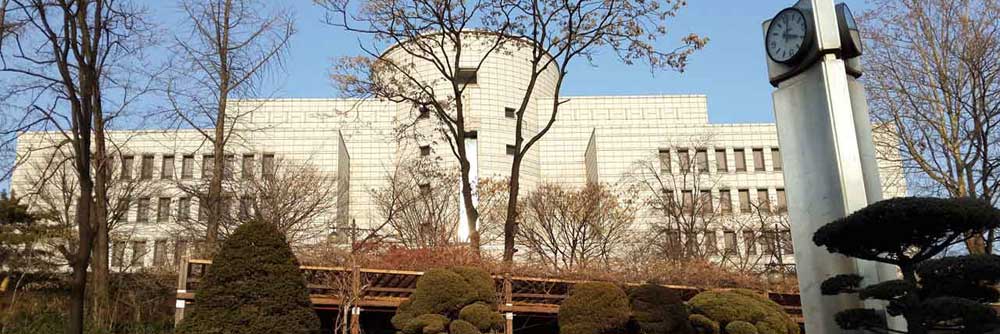This playlist shows some of the amazing videos that Hanyang University students created in my “English Writing with Multimedia” class. The first video (“BAD” by LionDEy) is a remix of some music posted by an artist named “Wale” on YouTube. The rap segments were written, performed, and produced solely by those five members of the small HYU student group that called itself LionDEy.
Nearly one year ago, I started teaching this blended EWM class as an advanced writing course. I researched and developed the class for about 8 months before it began and also had the benefit of being enrolled in two MET courses for two months prior to the first day of EWM class on March 1, 2013.
While developing the course, I had been very proud of my work and was really looking forward to teaching it. Then, after ETEC510 and ETEC532 introduced me to some of the key concepts of constructivist pedagogy, I quickly realized that those brilliant plans that I was so emotionally attached to were in urgent need of being drastically revised. Although it was a long process that actually continued throughout the semester, I am thankful that I can honestly say that the final results were very good.
Near the end of the semester, my students overwhelmingly expressed positive comments in their course evaluations about the constructivist approach that they had never experienced before and our department head asked me to give a short presentation about this “new teaching method” at our staff workshop to kick off the Fall semester.
This entire experience has allowed me to develop significantly in all five of the NETS standards and performance indicators. This is gratifying, but it is also most humbling. It humbles me because, deep inside, I know that the successful outcomes would not have been possible if I had just stuck with my original plans, as beautiful and pristine as I thought they were. And, above all, I know that even if I am fully confident about my skill in using educational technology, I still have a lot of learning to do.
In 2008, the International Society for Technology in Education (ISTE) published its latest version of the “National Educational Technology Standards for Teachers” (or NETS), and, among the five NETS categories, I think my greatest strength is in#1: facilitate and inspire student learning and creativity. In both our final classes and my students’ course evaluations, many of them made a point of telling me that my passion really inspired them—and they absolutely proved that with amazing—and inspiring—work that they did in their video projects!
While enjoying this fascinating journey on Flight ETEC565A, the category I hope to develop more knowledge and confidence is in #4: promote and model digital citizenship and responsibility. I think that, in this regard, society is in a state of flux–and so am I.
As anyone who has read or listened to Lawrence Lessig knows, our favourite Web 2.0 giants (such as YouTube, Vimeo, Twitter, Vine, Instagram, etc.) plus all our affordable mobile devices and computers have make it easy for us to publish videos and mash-ups that are edited and remixed in ways that, for decades, could only be done by large music studios and movie companies.
As Lessig says, this has “democratized technology” and provided people with ways of saying things differently like we never could ever before. This has also led to all kinds of copyright disputes and, for all professionals in this digital-age, there needs to be a lot more exploration, research, and revision of copyright laws and teaching approaches. The video on the right is my own re-mix of two presentations that Professor Lessig gave a few years ago. (Actually, it’s not much of a “re-mix.” To encapsulate Lessig’s key points, I just pulled out a couple of the most striking segments and edited them together. If you have time and interest, full context is available at this URL, which shows his entire TEDTalk presentation and at this URL, which shows a bit more context than my edited clips do.)
Hopefully, we will have some opportunities to consider some of these issues in Module 4. I am particularly interested in the topics for Week 11 “UBC Copyright Requirements” and “UBC Copyright ‘fair dealing’” and how they will relate to the module’s preceding discussions on Social Media. Undoubtedly, my knowledge and confidence in those areas will evolve significantly.
Before getting into copyright concerns, our Flight ETEC565A will take us over the very fertile ground of “Social Media, Collaborative Writing, Personal Publishing and Social Networks and, because this is intrinsic to the “new literacy” that I’ve had the privilege of facilitating with my students, I fully expect to once again find myself making drastic changes and revisions to my courses. And I hope to disembark from this journey as a much more confident educator who has a solid foundation upon which to correctly “promote and model digital citizenship and responsibility.”
——————————————————–
To the Hanyang University students who created and appeared in the playlist, I gratefully honour and give full credit to them:
- Grace Lim, GyuJin Park, KyuSoo Park, GyeongYong Lee in “Legend of Hanyang”
- NamHyung Kim, JiYeon Yi, Oxana Khvan, and HeaJin Shin in “MV KaKao Talk”
- Ahra Cho, Donghwi Cho, Eunji Je, SangYoon Kim, and TaeYoung Song in “5 Friends”
- KyungMin No, KyunHee Lee, JeWoong Lee, YiChang Kim, and YooJeong Kim in “BAD”
- Grace Lim and some of her many friends in “Smile”
——————————————————–
For those who may be unfamiliar with Lawrence Lessig and what he calls “a new literacy for the 21st Century,” here are a few more links that may be helpful:
- Harvard Law School’s Biography Page
- Wikipedia Article about Lawrence Lessig
- Lawrence Lessig lecture on copyright in the digital age at the Swedish Parliament
- Q&A with Lawrence Lessig on copyright in the digital age
